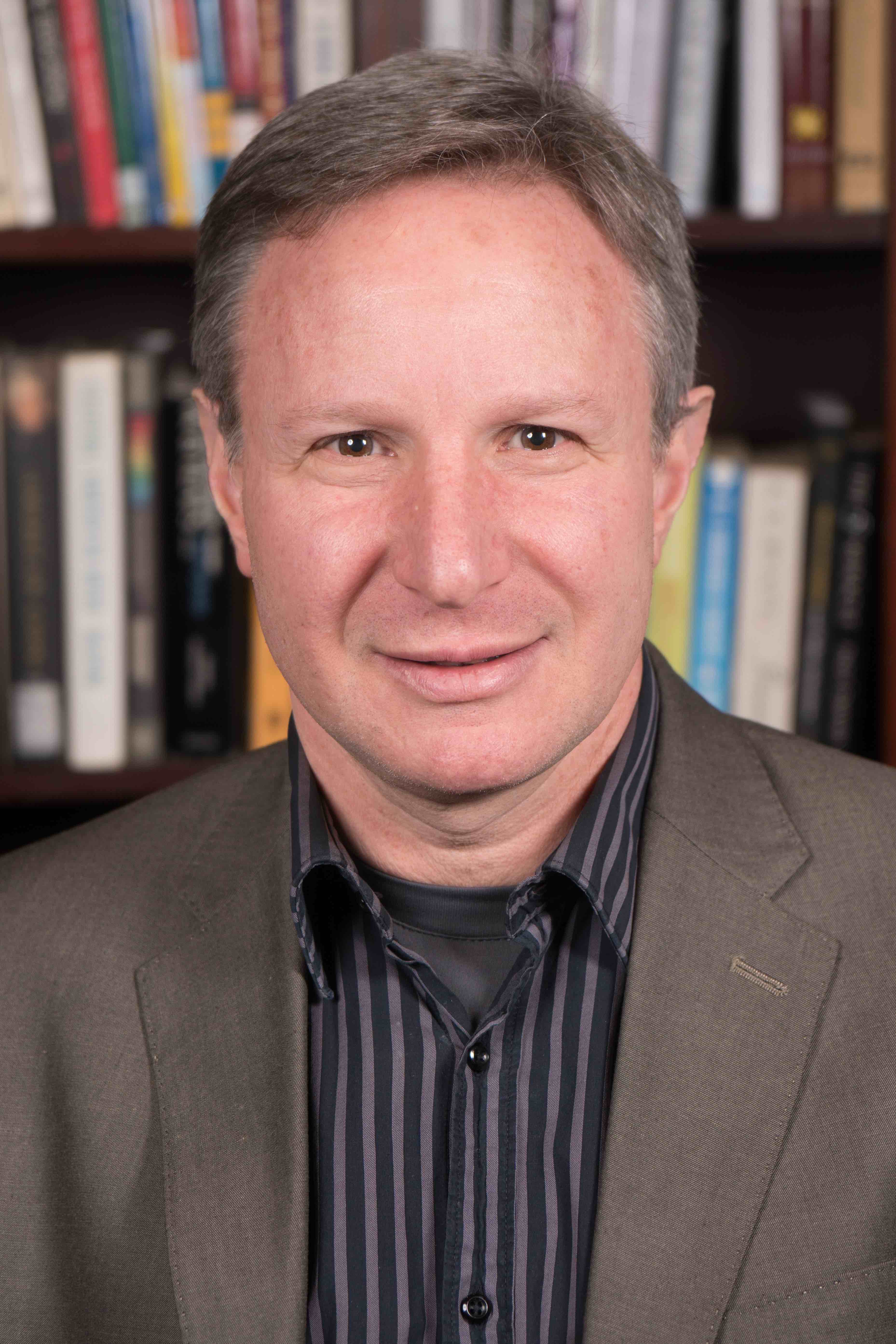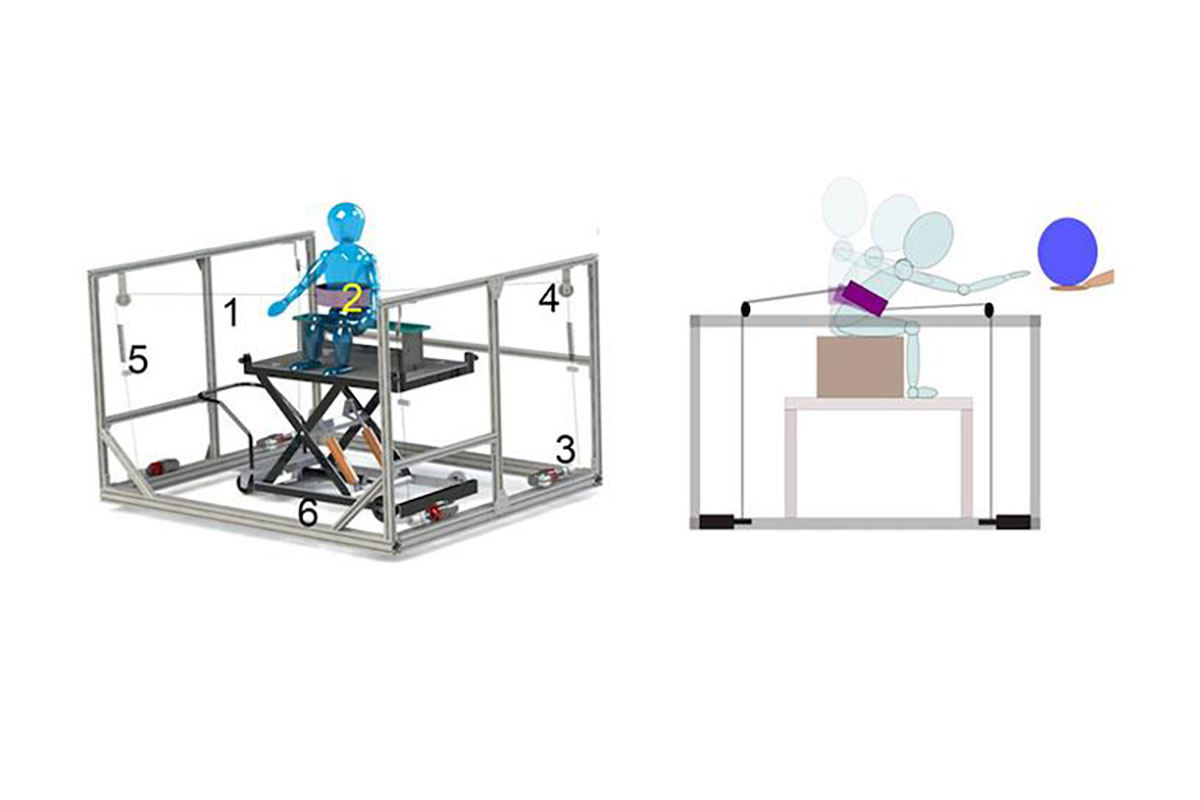Sitting is an activity that most of us take for granted — including people who use wheelchairs because of physical impairments.
But while children with severe cerebral palsy (CP) may occupy wheelchairs, they often cannot sit up — and even those who are able are at risk for falling forward if they try to move their heads or arms.
That situation could improve if a collaboration between TC Professor of Movement Sciences Andrew Gordon and researchers at Columbia University’s Fu Foundation School of Engineering and Applied Science bears fruit as expected.

KEY PARTNER Andrew Gordon, TC Professor of Movement Sciences, has spent years developing new therapies that have helped children with cerebral palsy. (Photo: TC Archives)
In a recent preliminary study, reported on in Science Magazine, a robotic device created by the Columbia researchers with guidance from Gordon — an authority on cerebral palsy who has previously developed therapies that have improved mobility for thousands of children with milder forms of CP — enabled children with lack of “seated postural control” to not only sit up but improve their upper body control.
[Read the study by Gordon and co-authors, which has been published online in the journal IEEE Transactions of Neural Systems and Rehabilitation Engineering. Read the Science Magazine story about the study. Watch the video below of therapy using the new experimental robotic device.]
Now Gordon and the researchers in the Robotics and Rehabilitation Laboratory (ROAR) led by Columbia mechanical engineering professor Sunil Agrawal have received a $3 million, five-year grant from the National Institutes of Health to further refine the device and test it in a larger group of children with CP.
“Almost all the rehabilitation research in CP to date with evidence of efficacy — including the work we do — is with kids with the mildest form of CP,” Gordon says. “They typically are ambulatory and have one functioning hand, and therapy focuses on getting them to walk better and improving the function of the impaired hand. But that leaves behind kids with more severe, non-ambulatory bilateral CP, or those who walk with assistive devices.”
Watch a video of therapy with the TRuST device.
The experimental device, called TRuST (for “Trunk Support Trainer), provides support to the torso via a belt that is attached to cables. Those, in turn, are attached to “force transducers” and motors. The device feeds information into a computer in order to determine an area of a child’s body that’s in need of stabilization. When a movement threatens to move the body beyond the zone in which it will remain upright, the device responds by pulling it upright.
“Essentially we create a force field — a customized mapped space around each child, beyond which they are risk for falling over,” Gordon says. “Then we challenge them to move beyond that safety zone by presenting them with objects and games and balls that they have to reach for. When they move too far, the device assists in bringing them back to a centered position. But the force of the device is set at 10 percent of body mass, so they still have to exert effort, which enables them to gradually improve their performance.” As their performance improves the size of the safety zone is increased, requiring children to move further.
Until now, physical therapists have typically provided stabilization by placing their hands around a child at whatever level of the body where support is needed. Some therapy centers provide a strap at that level, but, Gordon says, “it’s a passive device that keeps the kids fixed — it doesn’t really challenge their posture, whereas we challenge them at the boundary of the force field.”
Essentially we create a force field — a customized mapped space around each child, beyond which they are risk for falling over. Then we challenge them to move beyond that safety zone by presenting them with objects and games and balls that they have to reach for. When they move too far, the device assists in bringing them back to a centered position. But the force of the device is set at 10 percent of body mass, so they still have to exert effort, which enables them to gradually improve their performance.
— Andrew Gordon, Professor of Movement Sciences
Currently, the TRuST device, which is a large, immobile device, is designed for use only in experimental therapy. But “the long-term goal, beyond rehabilitation, is to make smaller, more mobile devices,” Gordon says. “We want it to be available for use at home, especially for kids in wheelchairs, so that it’s not just a tool for therapy, but something they can have with them all the time, to improve quality of life.” This may be useful for other patient populations with seated postural control impairments, including those with spinal cord injury.
The collaboration between Gordon and the ROAR Lab benefited early on from $100,000 in annual funding from then-Columbia faculty member Joseph Dutkowsky, an orthopedic surgeon who had received a grant from the Knights of Malta to seed research in pediatric research.
In other work funded by NIH, Gordon is conducting a study to see whether the use of non-invasive brain stimulation can reduce time spent in physical therapy for children with milder forms of CP.
[Read a story about Gordon’s work to help children with CP better grasp objects.]
